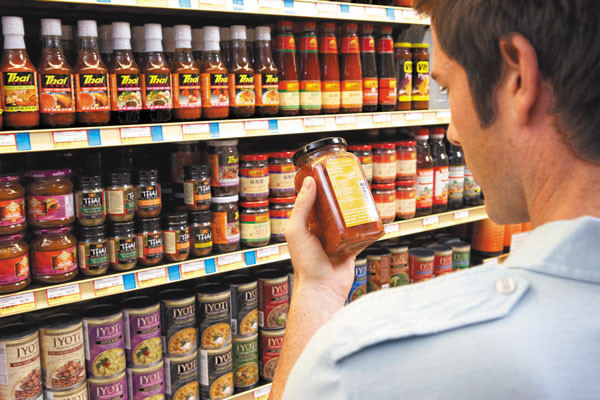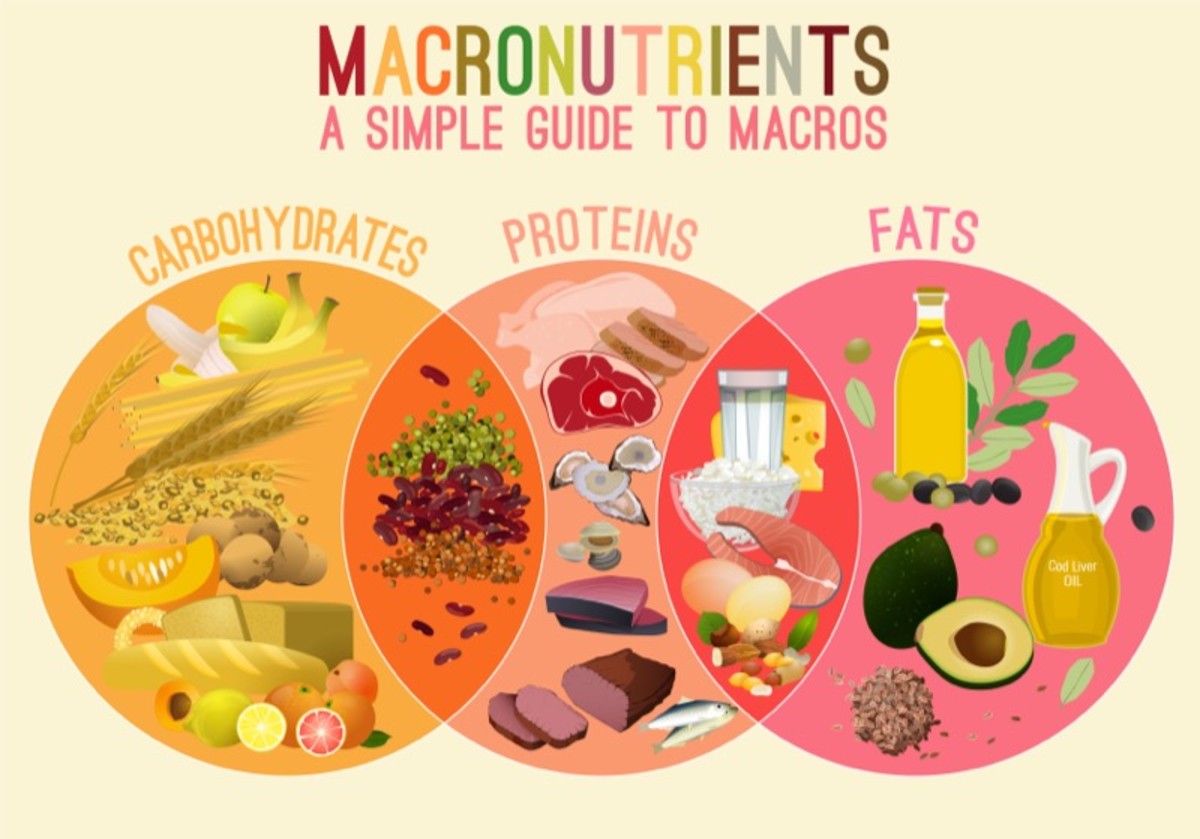Food labels are protected on all meals products, barring for very small packets and sparkling ingredients like fruit, veggies and neighborhood bakery or natural products.
Food labels:
tell you what elements and/or components are in the food
give you dietary data about the meals and meals storage instructions
tell you who manufactured the food.
Nutritional facts panels (NIPs) are a section of the meals label. These inform you what vitamins the meals incorporates and how lots of every nutrient there is.
When you purchase a packaged meals product, have a appear at the returned of the packet. You ought to be in a position to see a container with a heading like ‘Nutritional information’. Under the heading, you’ll see classes like:
- serving size
- energy
- protein
- fat
- carbohydrates
- sugars
- dietary fibre
- sodium.
Ingredients on meals labels
In Australia, meals producers ought to be straightforward on their meals labels.
A meals label can encompass solely the elements that are in the meals product. For example, strawberry yoghurt need to incorporate strawberries.
The label additionally has to listing the quantity of the ingredient that’s in the food. This facts is in the ingredient list, the place it will be written as a share – for example, ‘strawberries (20%)’.
All elements need to be listed in descending order through weight, such as brought water. The ingredient listed first is the one that used to be existing in the greatest quantity when the product was once manufactured. So if sugar is the first ingredient, it ability that sugar is the major ingredient and the product is excessive in sugar. The ingredient listed closing used to be existing in the smallest amount.
Nutritional informational panels
All ingredients have to listing seven meals aspects on their dietary statistics panels – strength (kilojoules), protein, complete fat, saturated fat, complete carbohydrates, sugars and sodium. Manufacturers would possibly determine to consist of different vitamins too, which includes fibre and calcium.
Comparing the dietary facts on one of a kind meals merchandise helps you work out the healthiest choice. The healthiest options have decrease saturated fat, decrease sodium, decrease sugar and greater fibre.
When you’re evaluating two products, seem at the ‘per one hundred gm’ or ‘per a hundred ml’ facts on each, alternatively than the ‘per serving’ information. This way you can evaluate the equal issue on every product.
Things to seem to be out for on meals labels: energy, fat, sugar and salt
Energy
Energy is listed on the panel as kilojoules (kJ). Fats, protein and carbohydrates all grant your physique with the strength or kilojoules you want to feature and do your every day activities. When evaluating comparable foods, decrease electricity normally capacity decrease fats or sugar, which ability that the meals is a higher desire for most people.
Fat, sugar and salt
Manufacturers can listing fat, sugar or salt content material underneath distinct names relying on the ingredient used in the product. This capability that these meals aspects would possibly appear ‘hidden’ on the ingredient list. These factors would possibly go by means of exclusive names – however anything they’re called, excessive fat, sugar and salt content material typically capacity the meals is much less healthy.
Fat may be listed as red meat fat, butter, shortening, coconut, palm oil, copha, cream, dripping, lard, mayonnaise, bitter cream, vegetable oils and fats, hydrogenated oils, full cream milk powder, egg or mono/di/triglycerides.
Sugar would possibly be listed as brown sugar, corn syrup, dextrose, disaccharides, fructose, glucose, golden syrup, honey, fruit juice concentrate, fruit syrup, lactose, malt, maltose, mannitol, maple syrup, molasses, monosaccharides, uncooked sugar, sorbitol or xylitol.
Salt may be listed as baking powder, booster, celery salt, garlic salt, sodium, meat or yeast extract, onion salt, MSG, rock salt, sea salt, sodium bicarbonate, sodium metabisulphite, sodium nitrate, nitrate or inventory cubes.
Some packaged ingredients have a fitness superstar rating. This machine appears at how nutritious ingredients are and prices ingredients from half of a superstar to 5 stars. Generally, the extra stars a meals has, the more healthy it is.
Food additives
Many meals incorporate meals additives. There are strict suggestions about the way meals components are used in meals and labelled on meals products. All meals components have to be proven on the ingredient listing – for example, thickener (1442). The label have to say if an additive is primarily based on a manageable allergen – for example, wheat thickener (1442).
You can get a listing of meals additive names, numbers and frequent makes use of from Food Standards Australia New Zealand – Additives.
A very small wide variety of humans are touchy to some meals additives, like synthetic colours, preservatives and flavour enhancers. If you suppose your toddler would possibly have a sensitivity, see your GP or dietitian to speak about meals allergic reactions and meals intolerances.
Food hypersensitive reaction information
Nine ingredients reason 90% of all meals allergic reactions – peanuts, tree nuts, shellfish, fish, cow’s milk, eggs, soybeans, sesame and wheat. If these substances are in a meals product, producers need to say so, no be counted how small the amount.
The facts can be mentioned in a few exclusive ways. For example, if you’re checking a product for egg, you may see:
- albumin (egg)
- egg albumin
- contains egg – at the stop of the ingredient list
- sugar, chocolate, eggs – in daring kind in the ingredient list.
‘May comprise traces of’
Manufacturers may consist of this warning if a meals is made on the identical gear as, or shut to, different meals that comprise manageable meals allergens.
It’s voluntary for producers to use ‘may contain’ statements, so a product that doesn’t have a ‘may contain’ declaration may no longer be safer than one that does.
It’s necessary to speak to your GP or dietitian about this difficulty if your infant has a meals allergy.
Double-checking diet and fitness claims
Nutrition claims on meals packaging and in meals marketing – like ‘low-fat’ on the the front of a packet of chips – can be puzzling and misleading. Nutrition claims may snatch your attention, however it’s usually a suitable thought to seem to be at the dietary statistics panel.
Here are some factors to endure in thought about frequent diet and fitness claims:
- Cholesterol free: a product would possibly be one hundred percent ldl cholesterol free, however nevertheless comprise fat.
- Fat free: for a producer to make this claim, the product should have much less than 0.15% fat.
- Lite or light: this would possibly simply imply the meals is mild in colour, flavour or texture. You have to nevertheless take a look at the fats content material on the dietary statistics panel.
- Organic or licensed organic: a variety of personal organizations can certify merchandise as organic. Each employer should meet countrywide standards, however one-of-a-kind firms additionally have special certification requirements.
- Oven baked, no longer fried: these merchandise may nonetheless be sprayed or lined with fats earlier than cooking, making them excessive fat. It’s nice to take a look at the fats content.
- Reduced fats or salt: a product with this declare have to have at least 25% much less fats or salt than the authentic product. It doesn’t imply it is low in fats or salt, or has much less fats or much less salt than a comparable product.
- Sugar free or no delivered sugar: this skill the product is free of sucrose, or desk sugar, however no longer different varieties of sugar. It should nevertheless be excessive in kilojoules, salt or fat.
- Manufacturers have to stick to requirements that manage what they can say about the dietary content material and future health of their food.
‘Use by’ and ‘Best before’ dates
All ingredients with a shelf lifestyles of much less than two years need to have a date on them that tells you when the producer advises the meals will both be risky to consume or now not as appropriate to eat:
- Use by means of is for perishable meals like meat, fish and dairy. This is the date that tells you when a meals is ‘off’. It’s unlawful for retail outlets to promote meals previous its ‘Use by’ date.
- Best earlier than tells you the date when the meals will nonetheless be protected to consume however may no longer be of the fantastic pleasant anymore.
- Baked on or packed on is the date the meals was once manufactured or packed. This tells you how clean it is. You may see this on meals like bread and meat.


0 Comments